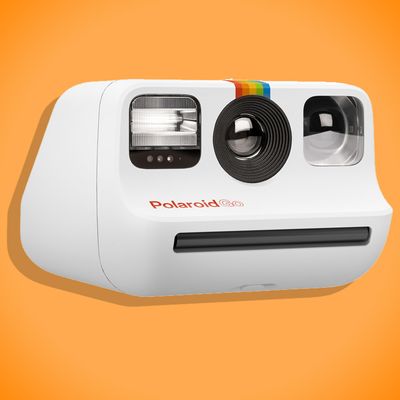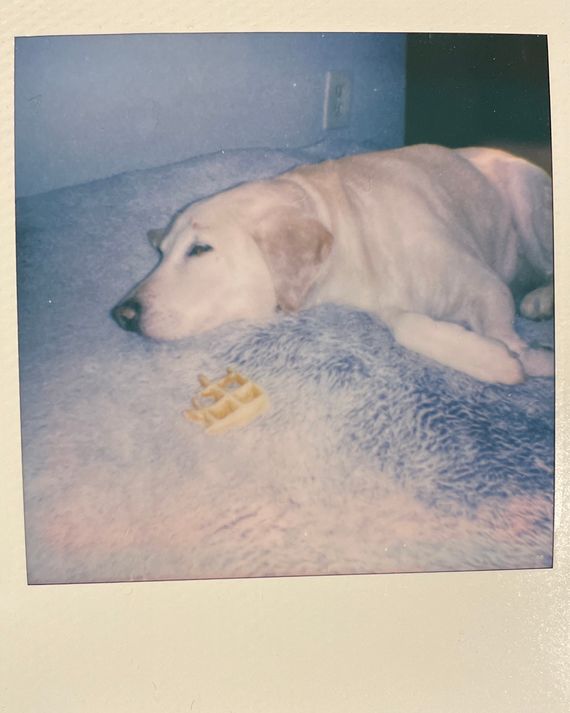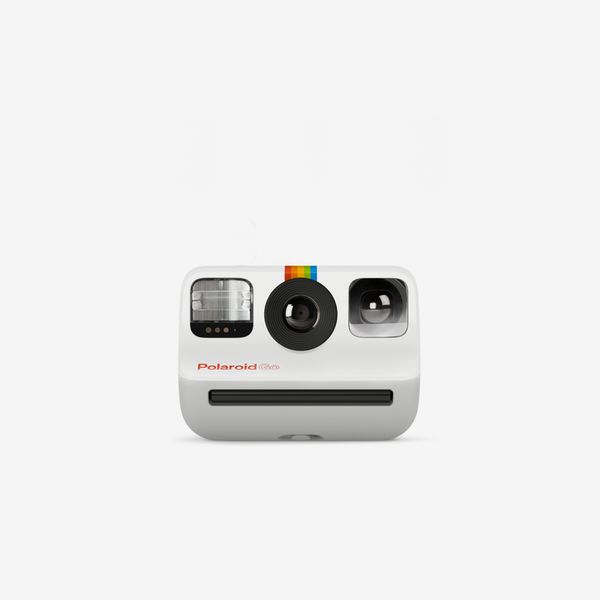
When I wrote about the best instant cameras last year, photographer and curator Wesley Verhoeve’s biggest suggestion for novices was “to focus predominantly on the aspect that makes it fun for them to use the camera.” I can’t imagine a camera much more fun than the Polaroid Go. The first time I picked it up, it felt comically tiny — and looked a little like if the dad in Honey, I Shrunk the Kids turned his ray gun on an RV. But truly, it’s a master class in camera design. It’s lightweight, with a style that is both sleek and goofy. And, of course, it takes great photos.
One recent weekend, I spent most of a day taking photos of my dog and my family around my house and in my backyard with the Go. Sometimes my eye was drawn to the way the sunlight or a shadow hit a stack of books that my brother had on a table or I was focused on my dog as she stumbled around outside before finding a patch of cool shade. The Go handled the flash well enough to compensate for the aperture whether it was outside or indoors. The picture quality was sharp, and it never missed focus, even after shooting multiple packs of film. The color saturation had a blue hue when I shot it in my dimly lit bedroom, but outdoors, with the sun shining, my family members’ skin tones and hair and other features looked rich. It still has that winsome Polaroid look that we clamor for when using instant cameras. Using it taps into that nostalgia pleasure center of the brain. I even managed to get decent photos of my dog, who is always dodging cameras — shots of her are usually a blurry mess. When I handed her a treat and snapped a photo, the film showed her suspended in motion, lurching forward with her mouth open to grab the treat.
The closest Go competitor is the Fujifilm Instax Mini, a great little camera that was praised by five experts in our instant-camera roundup. “It’s foolproof,” says photographer June Kim. “You can just pop in the film, and there’s no way to mess it up — unless you can somehow open the camera while it’s taking a photo.” Every time I used the Polaroid Go, it felt like a direct answer to the popularity of the Mini — a real Kong vs. Godzilla situation, with the titans of the instant-film world fighting to define the space for casual photographers.
After using the Go for a month, I prefer its shape over the Mini, which is a bit more bulbous and clunky. The Go’s viewfinder is larger and brighter and lets in more light, too, and it feels more stable and less plasticky. The true joy of the Go, however, is that it takes care of everything for you. With only three buttons — power, flash, and shutter — it’s hard to overthink things and mess up. If you point the camera and make sure your subject is in focus, you should end up with a good photo. The Fujifilm has a range of apertures, which can be helpful in some situations, but I actually noticed the Go’s automatic one to be frequently better. For example, the Fujifilm Instax cameras I’ve tried have a way of completely flashing me out of group photos with people with different skin tones. It has a habit of brightening people with lighter skin tones and completely missing people with darker skin, almost like the camera was erasing you from the event completely. I’ve looked at numerous Instax photos after they have developed, and it was like the camera didn’t even register that I was in the frame at all. I didn’t notice that with the Go. The pictures I took with it were more focused and brighter, whether I was shooting people or things, indoors on a rainy day or outside with bright sun.
As for the film, the Go’s pictures are about the size of a business card. (The Instax is a bit longer and more rectangular in shape, but I can’t see the difference swaying someone either way. Prices are similar, too, with Mini film costing $20 for 20 shots and Go costing $20 for 16.) Both are perfect for handing out to friends at parties or stacking together like little trading cards. I found myself using them as bookmarks, and Polaroid gives you mini glue stickers for posting pictures on your wall.
Throughout my review, I kept thinking about something photographer Dan Rubin said: “Regardless of the price point, instant film somehow still manages to seem completely magical.” There really is something transcendent about experiencing a special moment and then holding an image of it in your hands a few seconds later. And the Go has made that effortless. Instead of fretting over capturing the perfect thing, I snapped away blithely — realizing, with photos in hand, how many special moments I had actually experienced. And that was magical.
The Strategist is designed to surface the most useful, expert recommendations for things to buy across the vast e-commerce landscape. Some of our latest conquests include the best acne treatments, rolling luggage, pillows for side sleepers, natural anxiety remedies, and bath towels. We update links when possible, but note that deals can expire and all prices are subject to change.

